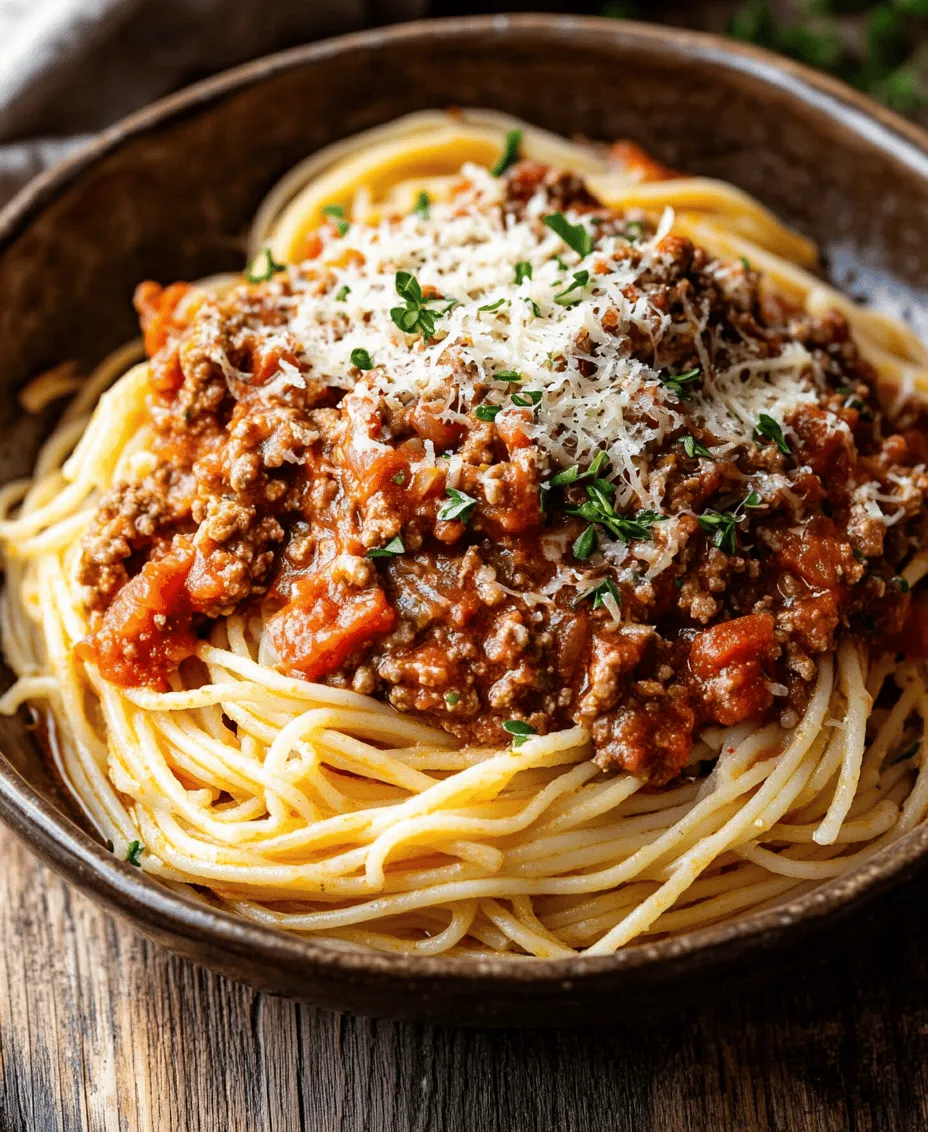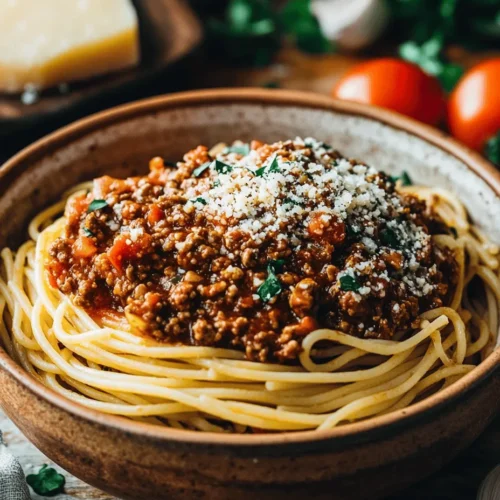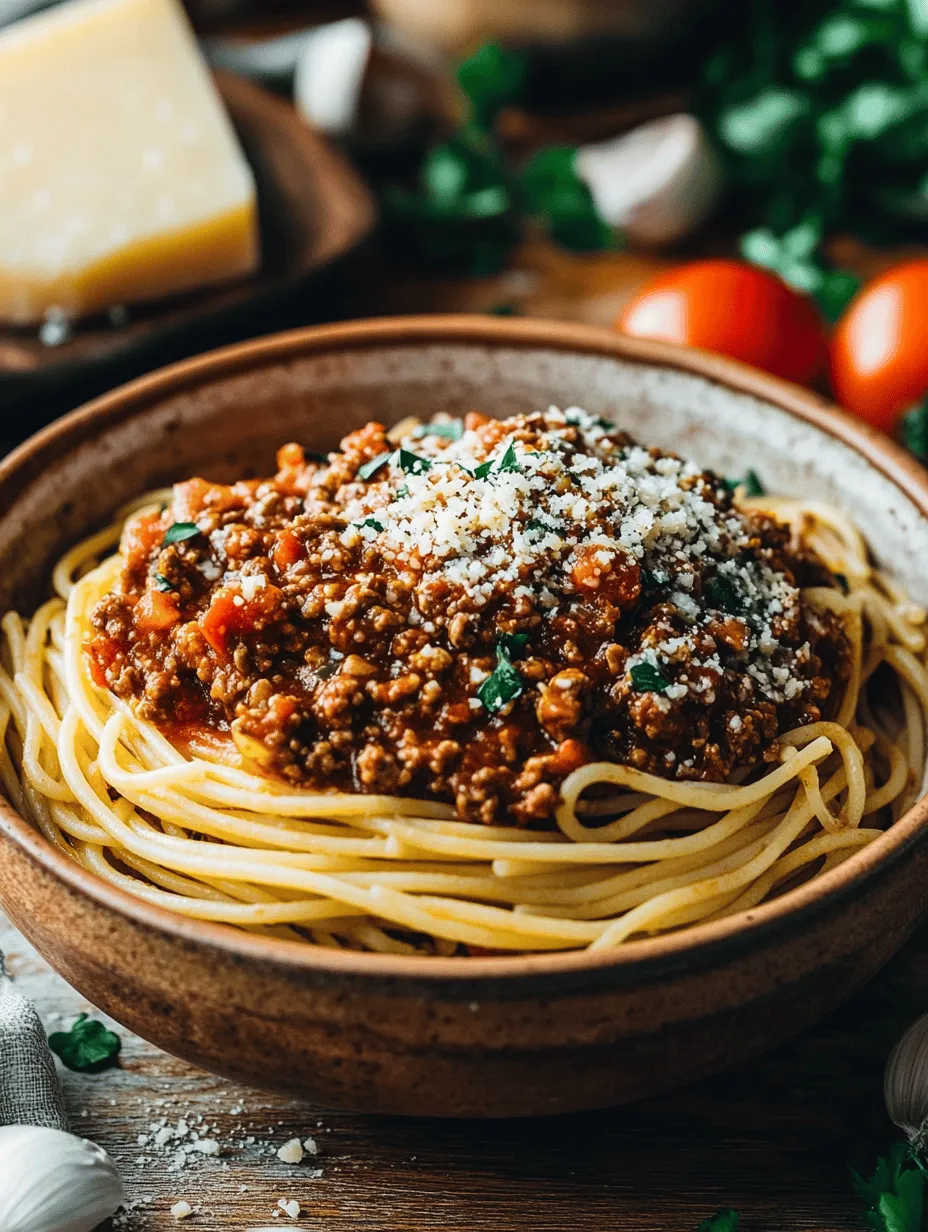Introduction
The culinary world is a tapestry woven from various cultural influences, and one delightful intersection can be found in the Greek Spaghetti Adventure. This dish marries the rich, savory flavors of Greek cuisine with the beloved Italian staple of spaghetti, creating a unique and satisfying meal that resonates with food lovers from both cultures. As you embark on this culinary journey, you’ll discover not only a delicious recipe but also the vibrant history and traditions that inspire it.
Greek cuisine is known for its emphasis on fresh ingredients, aromatic herbs, and hearty flavors. Traditional dishes such as moussaka, souvlaki, and tzatziki showcase the Mediterranean’s bounty, making it a favorite among health-conscious eaters and flavor seekers alike. On the other hand, Italian pasta dishes have long been celebrated for their comforting nature and versatility. By combining these two culinary traditions, the Greek Spaghetti Adventure invites you to experience a delightful twist on a classic dish, transporting your taste buds to the sun-soaked shores of the Mediterranean.
This recipe offers more than just an exciting meal; it encapsulates the essence of sharing and community that both Greek and Italian cultures treasure. Whether you’re hosting a dinner party, preparing a family meal, or simply indulging in a personal culinary adventure, this dish promises to be a standout on your table. With its vibrant colors, delightful aromas, and mouthwatering flavors, the Greek Spaghetti Adventure is sure to become a favorite in your home kitchen.
Exploring the Ingredients
The success of any recipe lies in its ingredients, and the Greek Spaghetti Adventure is no exception. Here, we will explore the primary components that make this dish unique, highlighting their culinary roles, the importance of freshness, and the nutritional benefits they provide.
Primary Ingredients
1. Spaghetti: This classic Italian pasta serves as the foundation of the dish, providing a hearty base that complements the rich flavors of the sauce. The choice of spaghetti is essential, as it holds sauces well and offers an ideal texture.
2. Ground Beef or Lamb: The protein choice adds a savory depth to the dish. While ground beef is widely used, lamb is a traditional favorite in Greek cooking, offering a distinct flavor profile that enhances the overall dish.
3. Fresh Tomatoes: In this recipe, ripe tomatoes are used to create a vibrant sauce. Their natural sweetness and acidity balance the dish, providing freshness and brightness.
4. Onion and Garlic: Aromatics are key in Mediterranean cooking, and both onion and garlic create a flavor base that elevates the dish. They add layers of flavor and fragrance, making the meal more inviting.
5. Olive Oil: A staple in both Greek and Italian cuisines, olive oil offers healthy fats and an authentic Mediterranean flavor. It is used for sautéing ingredients and drizzling over the finished dish for added richness.
6. Herbs: Fresh herbs like oregano, parsley, and basil contribute to the dish’s aromatic quality. They not only enhance the flavor but also add vibrant color, making the dish visually appealing.
7. Salt and Pepper: Essential seasonings that bring out the natural flavors of the ingredients. Proper seasoning is crucial for achieving a well-balanced dish.
Importance of Fresh Ingredients
Using fresh ingredients is paramount for creating an authentic Greek Spaghetti Adventure. Fresh produce not only improves the flavor but also ensures that the dish is nutritious. For example, ripe tomatoes are rich in vitamins C and K, while herbs are packed with antioxidants and have anti-inflammatory properties. When it comes to meat, using high-quality ground beef or lamb will provide better flavor and texture, making your dish stand out.
To achieve the best results, sourcing fresh ingredients from local markets or trusted suppliers is recommended. This not only supports local businesses but also allows you to select the best produce available. The fresher the ingredients, the more vibrant and flavorful your Greek Spaghetti Adventure will be.
The Culinary Journey: Step-by-Step Instructions
Now that you are familiar with the key ingredients that will make your Greek Spaghetti Adventure a success, it’s time to dive into the cooking process. This section will guide you through the essential steps to create a delicious, satisfying dish.
Boiling the Spaghetti: Perfecting the Al Dente Texture
The first step in our culinary journey is boiling the spaghetti. Achieving the perfect al dente texture is crucial, as it ensures that the pasta holds up well against the sauce and contributes to the overall mouthfeel of the dish.
1. Choose the Right Pot: Select a large pot to allow the spaghetti ample space to cook evenly. Fill it with water, leaving enough room for the pasta to expand.
2. Add Salt: Before bringing the water to a boil, add a generous amount of salt. This is an essential step, as it enhances the flavor of the pasta. The water should taste like the sea.
3. Bring to a Boil: Heat the water over high heat until it reaches a rolling boil. Once boiling, add the spaghetti.
4. Cooking Time: Follow the package instructions for cooking time, but start checking the pasta a minute or two before the suggested time. You want it to be firm to the bite, or al dente. This texture provides a delightful contrast to the rich sauce.
5. Drain and Reserve Water: Once cooked, drain the spaghetti in a colander, but remember to reserve a cup of pasta water. This starchy water can be added to the sauce later if needed, helping to bind the sauce to the pasta.
Sautéing the Aromatics: Building a Flavor Base
While the spaghetti cooks, it’s the perfect time to prepare the aromatic base that will elevate your dish. Sautéing onion and garlic is fundamental in Mediterranean cooking, as they provide a rich depth of flavor that enhances the overall dish.
1. Heat the Olive Oil: In a large skillet, heat a couple of tablespoons of olive oil over medium heat.
2. Add the Onion: Once the oil is shimmering, add finely chopped onion. Sauté for about 3-5 minutes until the onion is translucent, stirring occasionally to prevent burning.
3. Incorporate Garlic: Add minced garlic to the skillet and cook for an additional minute, just until fragrant. Be careful not to let the garlic brown, as it can become bitter.
4. Building Flavor: At this point, you can add a pinch of salt to the onions and garlic. This will help draw out moisture and deepen the flavors.
Browning the Meat: Achieving the Right Texture
With the aromatics sautéed to perfection, it’s time to introduce the star of the dish: the ground meat. Properly browning the meat is crucial for flavor development and adds richness to the sauce.
1. Add the Meat: Increase the heat to medium-high and add the ground beef or lamb to the skillet.
2. Break It Apart: Use a wooden spoon or spatula to break the meat into small pieces. This ensures even cooking and prevents large clumps from forming.
3. Browning Technique: Allow the meat to cook undisturbed for a few minutes, letting it develop a golden-brown crust. After a few minutes, stir occasionally to promote even cooking.
4. Flavor Development: As the meat browns, it will release delicious juices that will combine with the aromatics, creating a flavorful base for your sauce.
5. Avoid Overcooking: Keep an eye on the meat to ensure it cooks through without becoming tough. The goal is to achieve a nice brown color while keeping the meat tender and juicy.
By following these initial steps, you’ll lay the foundation for an unforgettable Greek Spaghetti Adventure. The combination of perfectly cooked pasta, aromatic sautéed vegetables, and well-browned meat creates a symphony of flavors that will delight your taste buds. Stay tuned for the next part of this article, where we’ll delve into creating the sauce and finishing touches that will bring this dish to life.

Making the Sauce: A Symphony of Flavors
To create a truly memorable Greek Spaghetti Adventure, the sauce is the heart of the dish. It’s where flavors meld and come alive, transforming simple ingredients into a culinary masterpiece.
The Significance of Using Crushed Tomatoes Versus Fresh
When it comes to the tomato base for your sauce, choosing the right form of tomatoes is essential. Crushed tomatoes are a popular choice because they provide a consistent texture and flavor. They are typically cooked down, which concentrates their natural sweetness and acidity, making them ideal for sauces. In contrast, fresh tomatoes can also be used; however, they require peeling, seeding, and cooking down to achieve a similar depth of flavor. For ease and a rich, robust flavor, crushed tomatoes are recommended as they offer a balance that fresh tomatoes may not always provide, especially out of season.
How Tomato Paste Enhances the Sauce’s Richness
Adding tomato paste is a game changer when it comes to enriching your sauce. Tomato paste is made from concentrated tomatoes, which means it packs a punch of flavor in a small amount. When you sauté the tomato paste with your aromatics at the beginning of the sauce preparation, it caramelizes slightly, enhancing the overall depth. This not only adds richness but also a complex umami flavor that elevates your spaghetti dish to a whole new level.
The Role of Herbs: Oregano and Basil in Greek Cuisine
No Greek dish is complete without the aromatic touch of herbs. Oregano and basil are the stalwarts of Greek cooking, infusing your sauce with earthy and slightly sweet notes. Greek oregano, in particular, has a more robust flavor than its Italian counterpart. It thrives in the Mediterranean climate, making it a staple herb in Greek kitchens. Fresh basil adds a hint of sweetness and a beautiful aromatic quality to the sauce. Combining these two herbs will bring authenticity and vibrant flavor to your Greek Spaghetti Adventure.
Adjusting Seasoning for Personal Taste
As you prepare your sauce, tasting is crucial. The beauty of cooking lies in personalization, and this recipe is no exception. Start with a base of salt and pepper, but don’t hesitate to experiment with other seasonings. A touch of red pepper flakes can add heat if you enjoy a spicy kick. You may also consider a splash of red wine for depth or a drizzle of balsamic vinegar for sweetness. Adjust the seasoning throughout the cooking process to suit your palate, ensuring that your sauce reflects your unique taste preferences.
Combining and Serving: The Final Touches
Once your sauce has simmered to perfection, it’s time to bring everything together. Combining the spaghetti and sauce is not just about mixing; it’s an art form that enhances the dining experience.
Best Practices for Tossing Spaghetti and Sauce Together
When your spaghetti is cooked al dente, drain it but reserve a cup of pasta water. This starchy water is a secret weapon; adding a bit to your sauce can help it cling to the pasta better. In a large mixing bowl or pot, add the drained spaghetti and pour the sauce over it. Using tongs or a large fork, gently toss the spaghetti and sauce together, incorporating them thoroughly. The goal is to coat each strand with the rich sauce without breaking the pasta. If the sauce seems too thick, add a little reserved pasta water until you reach your desired consistency.
Importance of Presentation and Garnishing with Cheese
Presentation is key when serving your Greek Spaghetti Adventure. Serve the pasta in large bowls or individual plates for an inviting display. To elevate the dish further, garnishing with freshly grated Parmesan or crumbled feta cheese adds a salty, creamy contrast. A sprinkle of fresh herbs, such as basil or parsley, will not only enhance the visual appeal but also add a fresh flavor that complements the richness of the sauce. A drizzle of high-quality olive oil just before serving can also enhance the overall taste.
Cultural Influences and Variations
Greek cuisine has a rich history influenced by various cultures, including Italian culinary traditions. This spaghetti dish is a perfect example of how flavors can transcend borders and create delightful fusions.
Discussion of Greek and Italian Culinary Influences on Pasta Dishes
The similarities between Greek and Italian pasta dishes are apparent, with both cuisines showcasing the importance of fresh ingredients and vibrant flavors. While Italian pasta often emphasizes simplicity with garlic, olive oil, and fresh herbs, Greek dishes tend to incorporate more robust elements like feta cheese, olives, and spices. This Greek Spaghetti Adventure captures both worlds, offering a dish that is hearty yet refreshing, reflecting the Mediterranean’s diverse culinary influences.
Variations of the Recipe: Exploring Alternatives Such as Vegetarian or Seafood Options
One of the beauties of this recipe is its versatility. For those seeking a vegetarian option, consider adding seasonal vegetables such as zucchini, bell peppers, or eggplant to the sauce. These not only enhance nutrition but also add color and texture to the dish. Alternatively, seafood lovers can incorporate shrimp or mussels, simmering them in the sauce until just cooked through. These variations allow the dish to cater to different dietary preferences while maintaining the essence of Greek flavors.
The Versatility of the Recipe for Different Occasions
The Greek Spaghetti Adventure is perfect for various occasions, from casual family dinners to more elaborate gatherings. Its comforting nature makes it a crowd-pleaser, and the ability to customize it allows everyone to enjoy a version that suits their taste. Serve it with a side of Greek salad and crusty bread for a complete meal that brings warmth and joy to any table.
Nutritional Information
Understanding the nutritional profile of your Greek Spaghetti Adventure can help incorporate it into a balanced diet.
Breakdown of Calories, Macronutrients, and Vitamins in the Dish
On average, a serving of Greek spaghetti with sauce provides approximately 450-500 calories, depending on the portion size and specific ingredients used. The dish typically includes:
– Carbohydrates: 70-80 grams (from spaghetti and tomatoes)
– Protein: 15-20 grams (from pasta and cheese)
– Fats: 10-15 grams (from olive oil and cheese)
Additionally, this dish is rich in vitamins A and C from the tomatoes and herbs, as well as iron from the pasta, making it a nourishing option.
Discussion on Incorporating This Recipe into a Balanced Diet
While this Greek Spaghetti Adventure is deliciously indulgent, it can easily fit into a balanced diet. Pair it with a side of vegetables or a salad to increase fiber intake. Consider using whole-grain or legume-based pasta for added nutrients and protein. By being mindful of portion sizes and incorporating various vegetables or protein sources, you can enjoy this flavorful dish without compromising your dietary goals.
Conclusion
The Greek Spaghetti Adventure is more than just a meal; it’s a delightful fusion of cultures and flavors, bringing the essence of Mediterranean cuisine to your table. This dish showcases how simple ingredients can come together to create something extraordinary, inviting you to explore the rich tapestry of Greek and Italian culinary traditions.
As you dive into this flavorful experience, let it inspire you to continue exploring Mediterranean flavors and dishes. Whether you’re entertaining guests or sharing a meal with loved ones, the joy of cooking and sharing food is a universal language that brings people together. So, gather your ingredients, put on your apron, and embark on your own Greek Spaghetti Adventure—you’ll be glad you did.


